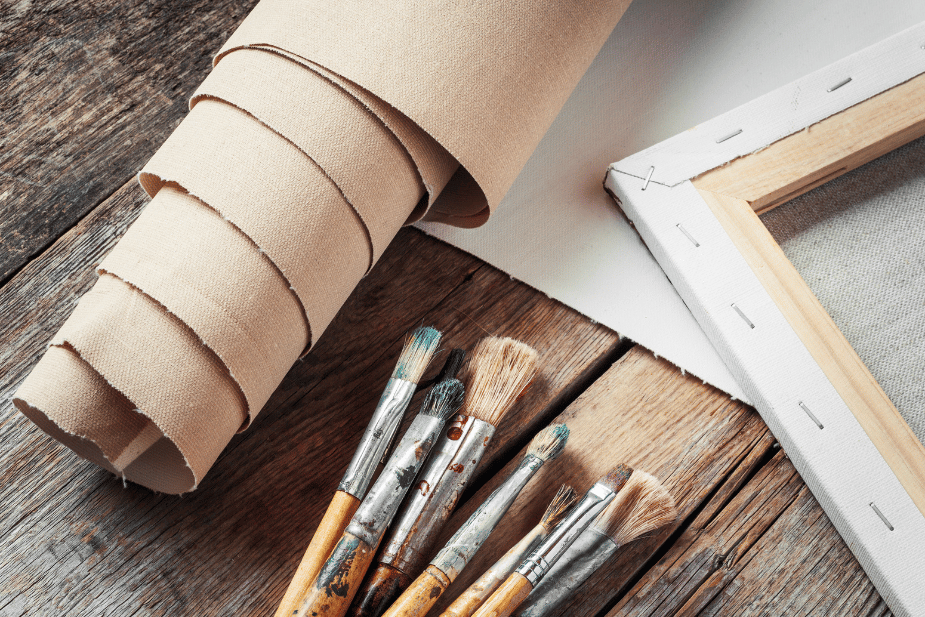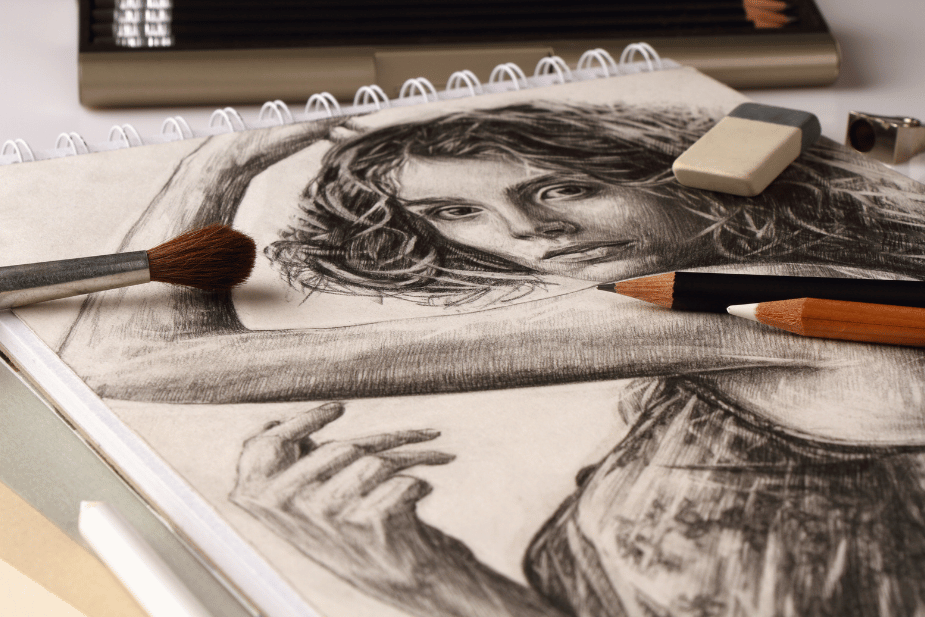
The Ultimate Guide to Canvas Rolls and Blind Frames
What you need to know before you start
When it comes to creating art, the choice of materials is almost as important as the subject itself. For many artists - especially painters - the canvas is the foundation of any work. And when you want flexibility and control over your formats canvas rolls and blind frames are indispensable. In this guide, we dive into what they are, how to choose them and how to use them.

What is a canvas roll?
A canvas roll is a large piece of untreated or primed canvas that is rolled up for easy storage and transportation. It gives you the freedom to decide the size and shape of your paintings - ideal for those who work large or want to save money in the long run.
Types of canvas:
- Cotton canvas: Most common and budget-friendly. Good for both acrylics and oils.
- Linen: Very strong canvas, can withstand very heavy painting techniques, also more expensive.
- Synthetic canvas: Often polyester, suitable for spray painting.
- Blend canvas: Cotton and polyester, the blend gives the best of both worlds, the absorbency of cotton, combined with the fine weave of polyester that does not absorb, together you get a canvas with a slightly finer weave, and a cheaper price.
Linen and cotton, the blend again gives you the best of both worlds, only here you get the coveted linen fibers that create structure and stability, and the cotton that has a little more absorbency and is more flexible and a cheaper price than 100% linen.

Surface treatment:
- Unprimed: Must be primed yourself, recommended 1 layer of glue and 2 layers of gesso.
- Primed: Ready to use - typically primed with polymer (acrylic), for universal use.
What is a blind frame?
A blind frame is a wooden frame that the canvas is stretched over. It ensures that your canvas is kept tight and flat while working and hanging. You can buy ready-made frames or assemble them yourself using loose frame wood profiles.

Key properties:
- Wood type: Pine, spruce or beech are common. Pine is lightweight and affordable, while harder woods hold their shape better.
- Profile: Thicker profiles are well suited for large canvases. Choose "gallery edge" (deep profile) for a modern look without the need for additional framing.
- Wedges: Small pieces of wood that can be used to tighten the canvas if it becomes slack over time.
How to stretch the canvas - step by step
- Cut the canvas to size: Place your blind frame on the canvas and cut with about 5-8 cm extra on each side.
- Stretch the canvas: Start by stapling in the middle of each side and work outwards alternately. Use a staple gun.
- Fold the corners neatly: Make it even - it gives a professional look.
- Tighten: Use wedges in the corners if necessary to make the canvas completely tight.
- Priming (if needed): Apply 1-3 coats of gesso and let it dry between each coat.
Benefits of using canvas rolls and blind frames
- Flexibility: Customize the size of your work - no standard frames needed.
- Economy: Save money on larger formats by buying canvas by the meter.
- Creative freedom: Ideal for series, large projects or non-traditional formats.
- Transportation: You can paint on rolls and stretch the canvas later, ideal for travel or exhibitions abroad.
What should you buy?
|
The product |
Recommendations |
|
Cotton or cotton blend for the budget-oriented painter, linen for those with large arm movements and thick paint layers. |
|
|
Choose length and profile according to format. |
|
|
Acrylic-based is standard and versatile |
|
|
Staple gun |
Manual or electric |
|
Wedges |
Usually included in blind frame kits or available in-store. |

Tips and tricks
- Paint on the canvas before stretching if you want to save space - but beware of deformation. Remember to measure at least 5 - 8 cm around your image so you can stretch the finished image.
- Wear gloves when handling unprimed canvas to avoid grease stains.
- Store canvas rolls in a dry, not too hot room to avoid drying out or mold.
Conclusion
Working with canvas rolls and blind frames takes a little practice, but it gives you much more control and flexibility as an artist. Whether you paint with acrylics, oils or experiment with mixed media, it's an investment in both your process and the durability of your work.
📌 Do you have questions or need advice? You can always contact us for a chat about canvas types, prices, blind frames and more. We are ready to help! Contact us directly by email info@stelling.dk or call us on tel: +45 33 11 33 22



